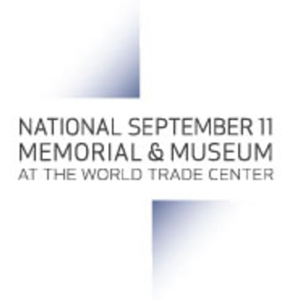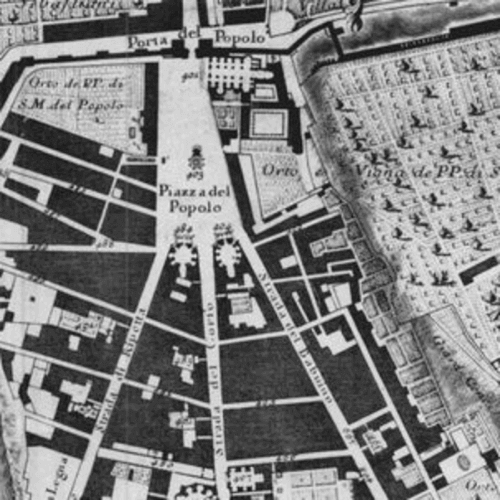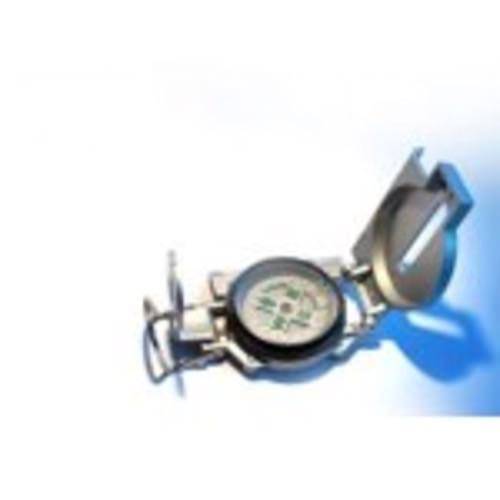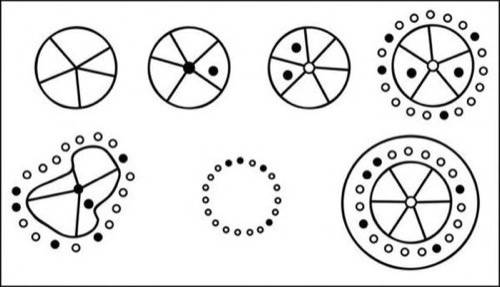Technology is frequently examined as though it were the reason for its own being, a kind of byte-driven tautology or spectacularly dry religious sect. But technology is a means to address questions. In that spirit, here are the top 10 stories about how we’ve employed the social web to ask and answer questions about our lives. These are “top” stories in the sense that they are representative, not exhaustive.

I’m focusing on culture, specifically on the humanities and science. I’m leaving politics and free speech to the side for the moment, since I’ve reviewed that aspect of tech a couple of times this month. Here are stories of how tech has been used to uncover our past, conserve our present and preserve our future. They are organized by date of publication, oldest to latest.
10. 9-11 Oral Histories Saved and Shared via Smart Phone
The terrorist attacks against the United States in September of 2001 left a lasting impression on the country and changes that came from that moment rippled out across the globe. We humans use whatever we can to understand what we’ve gone through and this year, mobile technology grew in leaps and bounds. It was inevitable that we used that technology to address our own feelings on the 10th anniversary of the attack.

Broadcastr, a Brooklyn-based mobile start-up, has struck an agreement with National September 11 Memorial and Museum to make 50 oral histories of first-responders available via smart phone and online.
When Broadcastr leaves beta In February, it will welcome the collection of additional cell-recorded oral histories it is hoping users will gather. Interviewers can also geolocate the interview.
As our population continues to increase and, as a species, we continue to claw at the world, technology keeps pace in an attempt to understand and roll back the damage.
The World Resources Institute and the Virginia Institute of Marine Sciences have teamed to create an interactive map of eutrophication and hypoxia in the world’s coastal areas.
There are 530 areas identified as suffering from low oxygen – that’s hypoxia – and 228 more suffering eutrophication, or excessive fertilization, usually from run-off. Identifying problem spots is job one for anyone hoping to slow, stop or reverse these sorts of marine declines.
8. New Software Helps Rebuild Ancient Cities
The natural world is not the only victim of our weight on the planet. Our own cultural patrimony and history suffers from neglect and abuse. Added to that, time, which is an intrinsic part of the environment, does nothing beneficial to the artifacts of our societies. But academics are hoping that advances in the sensitivity and data capacity of new technology will allow them to rebuild, in mind if not in fact, the physical remains of our past, specifically, the buildings that defined our relationship to the world. It’s an effort, as it were, to resurrect our ancestors from their footprints.

The first step in virtualizing a building is tracing it. That’s a tough and time-consuming activity. It can be creative but it can also produce inaccuracies. Now scientists at the University of East Anglia have developed a software that can capture and restore destroyed buildings from old maps.
Professor Stephen Laycock and his team have created a tool that will automatically extract dimensions and relationships from colored maps. Users can extract black and white maps by directing a cursor within the building’s mapped edges.
7. Using 3D Printing to Repair Rodin’s Thinker
3D printing is increasing in popularity as it decreases in cost. Makers fairs are increasing in frequency and small personal 3D printers are a bit more common, in offices, if not at the kitchen table. But it’s still largely the purview of dedicated companies. In 2010, Dutch firm Materialise worked with Egypt’s Council of Antiquities to “print” a picture-perfect Tut for traveling exhibits.
This year, Cornell University has begun to employ it to create safe-to-handle exact replicas of cuneiform, the ancient Near Eastern writing system, used on now-fragile clay tablets. But Materialise’s experience repairing the famous Thinker sculpture by the French sculptor Rodin, is a good picture of the so-what of 3D.
In 2007, the Singer Laren Museum in the Netherlands, where The Thinker resided, was burglarized. The meatheads who broke in did so not to steal the art, but to steal the metal. They made off with seven sculptures and started to try to chop them up to sell for scrap.
The Singer Laren needed to figure out how to deal with the butchered figure. iMaterialise had an idea. They did a CT scan of the damaged figure. Then they scanned the original mold retained by the Musee Rodin in Paris. They printed out a full-sized copy from the original on their Mammoth 3D printer. The conservators at the Singer Laren have used that and the scans of the original to re-fabricate and lay in the missing and damaged parts of the statue.
6. Using Twitter to Preserve Minority Languages
Languages, like rain forests, have the potential to contain answers to questions we may not even have had to form yet, or information that will guide us or remedies for what ails us. But the same technological tools that allow us to throw our voices halfway across the world – television, film, telephones – have pressured us to use the same language to exercise it. Centralization has meant standardization.

But new communications technologies, the social web and its mobile technology, may have provided us with an avenue back to Babel. (It can be a confusing, clamorous place, but it offers a fecundity that homogeneity does not.)
Of the approximately 6,000 languages alive in the world today, 60 percent or more are said to be dying out. The majority of the world’s languages are, in fact, “minority” languages, used in the shadow of a more politically powerful tongue.
On St. Patrick’s Day, Prof. Kevin Scannell of St. Louis University launched a project called Indigenous Tweets. Using a web-crawling statistical software he wrote called An Crúbadán, Scannell identifies which minority languages are being tweeted, by whom and how.
5. Geospatial Humanities: Using Location Tech to Rebuild the Past
Geotechnology is being used in an ever-increasing number of places and situations to understand where we come from and how we behave when we get there. As distributed as are our points of contact in the era of the social web, it still counts when a publication (still) as central to the national (and global) conversation as the New York Times recognizes it. It means it has moved from the realm of the specialist to that of the educated layman.

It’s not just the NYT who recognize how these technologies are changing the way we orient ourselves. The University of California, Los Angeles has opened a Center for Digital Humanities, that awards an interdisciplinary minor in Digital Humanities, the use of new technology for non-technological study.
Here are some examples of from the New York Times of how geotech is being used to understand where we came from.
- Gettysburg: rebuilding the topography of the battlefield as it existed at the time
- Salem: the geography of the witch trials
- The Dust Bowl: extent and reason for erosion during the Great Depression
- Eastcheap: the lay of the land and the location of the taverns where Shakespeare’s Prince Hal and Falstaff prowled
4. ARKive to Document Every Species on Earth
I am a fan of archives and I am especially keen on any archive, whether physical or digital, that takes access as an important elements of its mission. And I don’t just like archives of books and manuscript, I also dig archives that have nothing to do with the written word. For instance, if you haven’t marveled, drop-jawed, at the Svalbard Global Seed Vault, do.
Coming a close second to that in my personal pantheon of parchment-free archives is a digital project called ARKive.
Their goal: no less than the capture and preservation of a photographic record of every species under the sun. The group’s immediate goal is the completion of audio-visual profiles for all of the threatened species on the IUCN Red List.
The materials can be browsed by species group or eco-region or can be searched. Additional information includes topics like climate change and geography. Also on offer is an educational menu tailored to specific age groups. The photos themselves can be viewed individually or as slideshows and each species’ photo gallery is accompanied by a detailed description of the animal or plant.
3. Scientists Use Google Earth to Understand Mysterious Giant Wheels
Over the last several years, Google Earth, and other large-scale search tools with a geographical function, have helped archaeologists and others to identify history which was too large to be seen. In the past, such technology has identified lost cities, revealed ghost towns to be imperial capitols and unearthed hundreds of invisible Egyptian pyramids, temples and towns.

This year’s triumph was the revelation of hundreds of large-scale prehistoric earth-art installations spread all about the Arabian peninsula.
Thousands of geoglyph “wheels,” almost completely unknown to the public, are now part of public knowledge thanks to advances in technology, both photographic and social. These wheels are scattered across the deserts of Jordan and adjacent countries.
Professor David Kennedy of the University of Western Australia has been using Google Earth and aerial photography to study the structures, which were first reported in 1927 by British Royal Air Force fliers who were making mail runs over the area.
Image copyright of, and drawn by, Stafford Smith, APAAME.
In October, I spent several weeks in East Africa, speaking with executives, government officials and, most interestingly, developers. I visited three incubators in Nairobi devoted to startups in the social space. Given the emphasis in Kenya on mobile – as many as 60% of Kenyans pack mobile phones but as few as 5% have Internet connectivity via laptop or desktop computers – the development also focused on mobile, though not exclusively.
Sub-Saharan Africa is a region with 1 billion people, over 60% of whom are under 30 years old. High tech has been a primary driver of East Africa’s 40% growth over the last decade and small and medium-sized enterprises are poised to take over a great deal more of that growth going forward. Anyone who is not paying attention to the continent, and paying attention to it as a forge, not just as a market, is going to be sorry. The “developing world” is making the not-so-slow transformation from market to makers. Africa is right out front of that translation, having moved recently into the #2 position in the global mobile market.
I’ve come to the conclusion that no one is waiting for the government to wise up. They all seem powered, to various degrees, by the nerd catechism of “think it, code it, build it, sell it – NOW.”
That is hardly to say that government interest in such a top-heavy country as Kenya is unimportant to these groups, it just seems they have little hope of great support anytime soon. And, instead of despairing, they have all created different ways of reaching out to, and beyond, Kenyan society. In fact, one of my primary impressions was how these developers, as focused as they are on their own markets and the needs of their own society, are nonetheless well versed in global development issues and best practices and are in constant contact not just with each other, but with their peers and with corporations as far flung as Finland and the Silicon Valley.
1. 100 Years of Dance Music = Data With a Beat

Hey, people? It’s been a rugged year. Let’s face facts. There’s been political unrest like there hasn’t been in decades. The economy has been a sick mess. Our shared stress level has been high enough to interfere with the magnetosphere. (I made up that last bit but the sad fact is that it seems possible.) So let’s end this year in a massive, shared shaking of our groove things, alright?
The travel geeks at Thomson have created a data visualization you can dance to. They tracked the top-level dance genres over the past century, and expressed the data as an animated map that moves from parent genre to descendant, proliferating over time.
The mapmakers used data from the books Bass Culture, Last Night a DJ Saved My Life and The All Music Guide to Electronica, as well as Wikipedia. They marked the birth of each genre in five year periods.
Can I ask you to do one thing for me, as this grisly year draws to a close? Would you mind terribly getting down on it? Would you get down on it? Get your back up off the wall? Now you’ve got it. See you next year. (Inch’Allah.)










